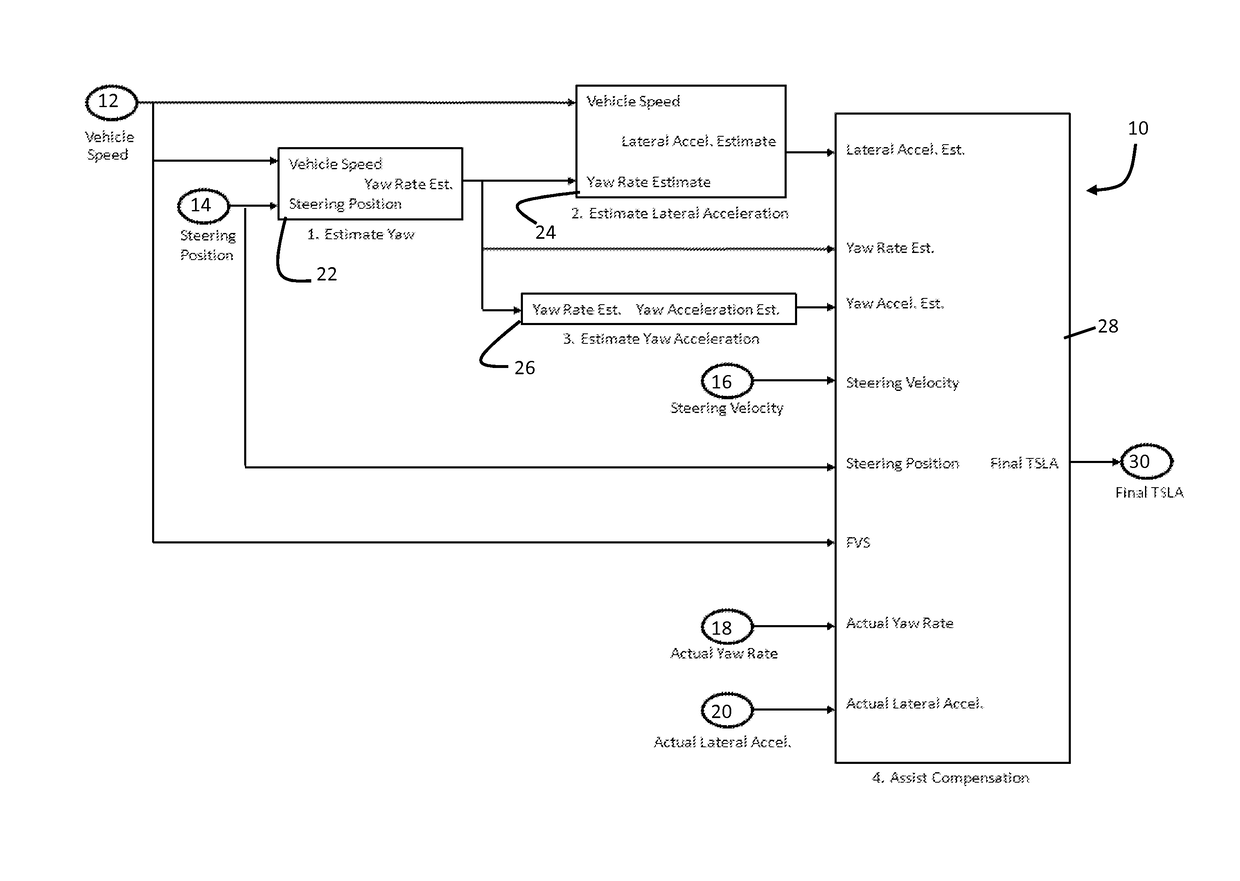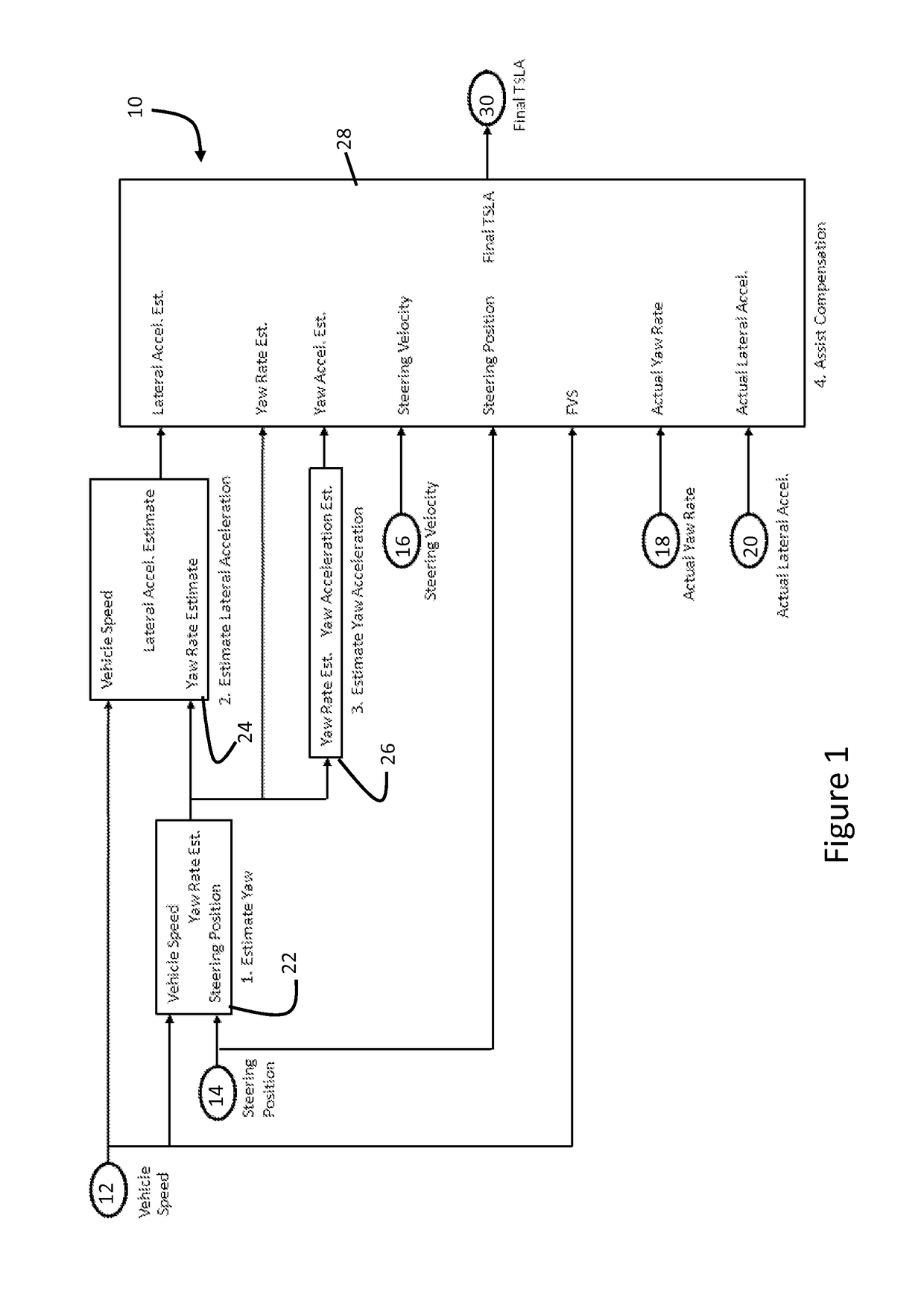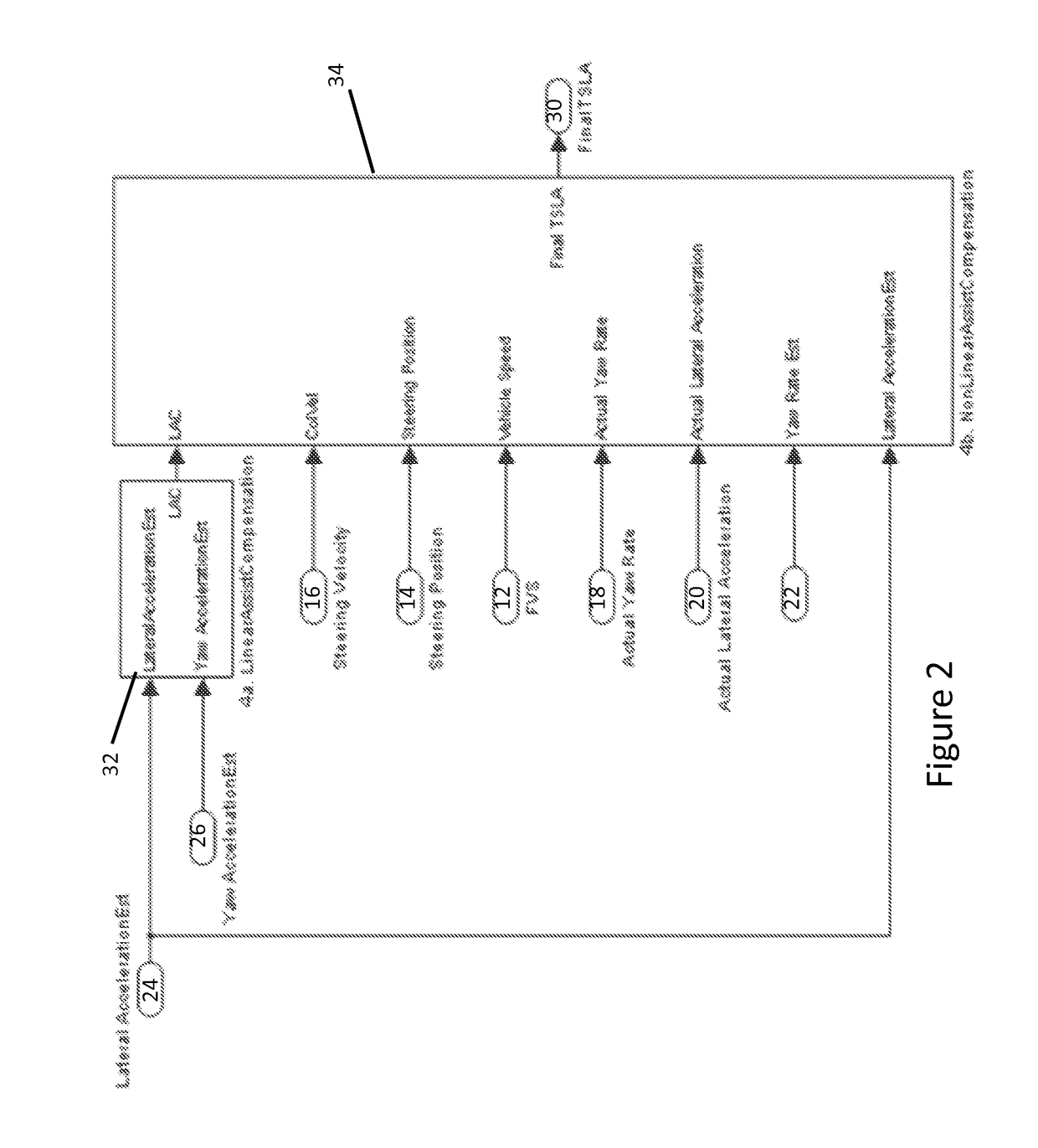Assist Compensation For Actively Controlled Power Steering Systems
a technology of power steering and compensation, which is applied in the direction of electric steering, power steering steering, vehicle components, etc., can solve the problems of reducing the accuracy of driver torque input,
- Summary
- Abstract
- Description
- Claims
- Application Information
AI Technical Summary
Benefits of technology
Problems solved by technology
Method used
Image
Examples
Embodiment Construction
[0017]Referring now to the drawings, there is illustrated in FIG. 1 a schematic illustration of an EPS control system, shown generally at 10, having an algorithm configured to provide steering assist compensation with a limp-home mode feature. In a broad aspect of the invention, the algorithm is configured to determine a level of steering assistance based on one or more of the following input signals from the related sensors: Vehicle Speed 12, Steering Position 14, Steering Velocity 16, Actual Yaw Rate 18, and Actual Lateral Acceleration 20.
[0018]As shown in FIG. 1, a first functional block 22, identified as “Estimate Yaw,” calculates Yaw Rate based on Vehicle Speed (also termed “filtered vehicle speed, FVS”) and Steering position. A second functional block 24, identified as “Estimate Lateral Acceleration” calculates a Lateral Acceleration based on Vehicle Speed and the Estimated Yaw Rate from functional block 22. A third functional block 26, identified as “Estimate Yaw Acceleration...
PUM
 Login to View More
Login to View More Abstract
Description
Claims
Application Information
 Login to View More
Login to View More - R&D
- Intellectual Property
- Life Sciences
- Materials
- Tech Scout
- Unparalleled Data Quality
- Higher Quality Content
- 60% Fewer Hallucinations
Browse by: Latest US Patents, China's latest patents, Technical Efficacy Thesaurus, Application Domain, Technology Topic, Popular Technical Reports.
© 2025 PatSnap. All rights reserved.Legal|Privacy policy|Modern Slavery Act Transparency Statement|Sitemap|About US| Contact US: help@patsnap.com



